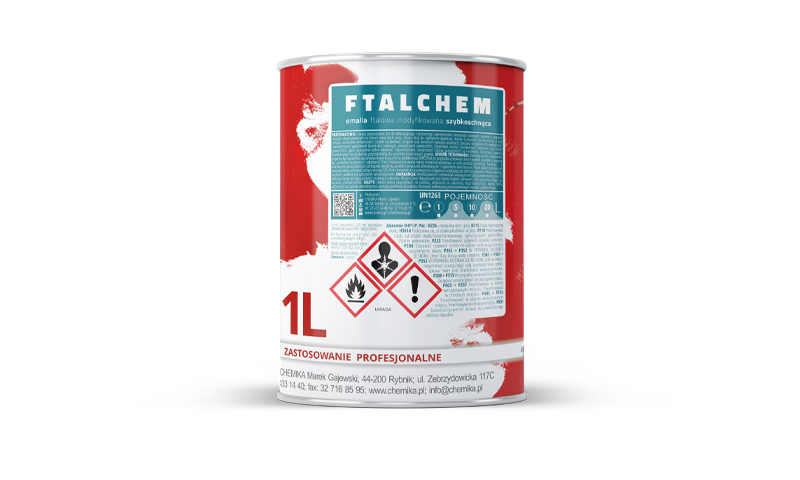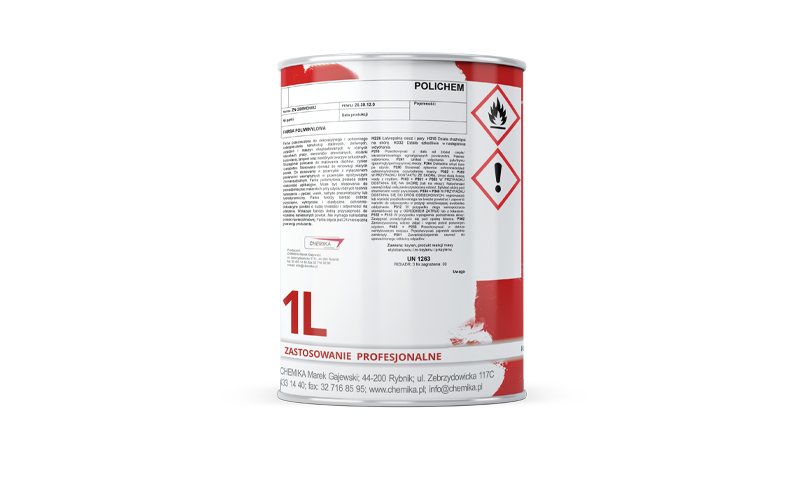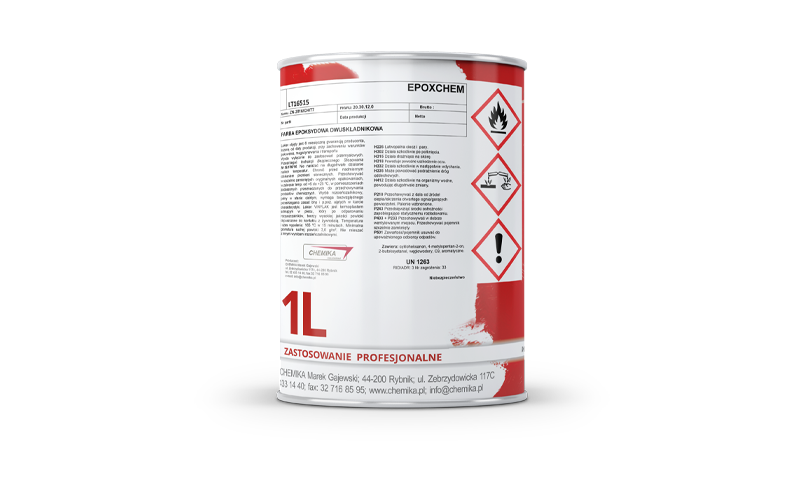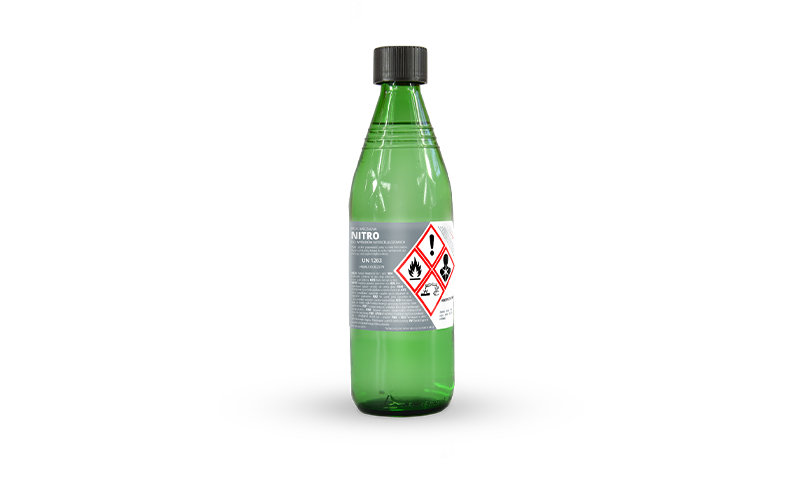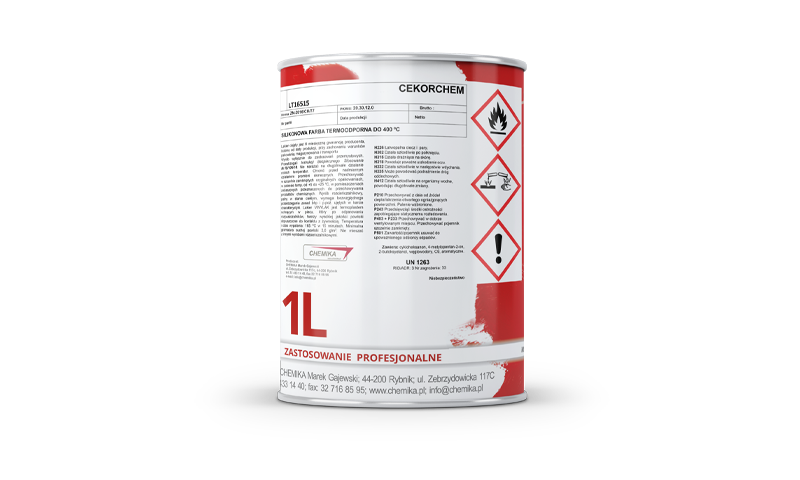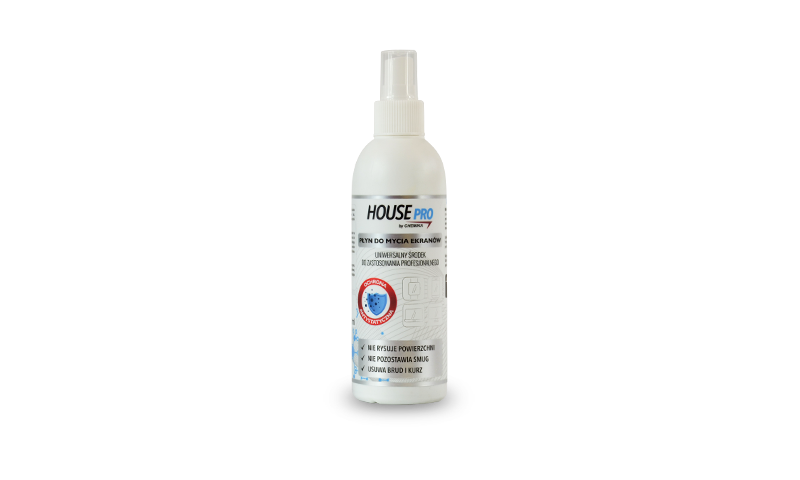Characteristics:
A suspension of pigments and fillers in a solution of modified phthalic resin in organic solvents with the addition of driers, pigments, and auxiliary agents. The enamel is available in a full range of colors, including those matching the RAL color chart. The product is available in any color according to individual agreements with the customer.
Product Properties:
Quick-drying phthalic enamel is characterized by a short drying time, very good adhesion to the substrate, and good mechanical properties. It can be applied using different application techniques: brush, roller, pneumatic spraying, or hydrodynamic spraying. The enamel forms highly adhesive, durable, and flexible decorative-protective coatings with high durability and gloss. The product has good atmospheric resistance. It also shows compatibility with the coatings of many other varnish products. The resulting coatings are smooth, flexible, resistant to impacts, temperature changes, and elevated temperatures.
Purpose:
Quick-drying phthalic enamel is intended for decorative and protective coating of steel, cast iron structures, devices, and machinery used under various working conditions. It is used for protective and decorative painting of apparatus, machinery, and devices, as well as steel and iron structures, wooden elements, building joinery, dado panels, and some plastics. It is particularly recommended for external and internal steel structure coatings, external surfaces of tanks, construction and agricultural machinery, and other surfaces where good resistance, flexibility, and good adhesion are essential. The enamel requires the application of a primer.
Application Method:
Before starting painting, the enamel should be well mixed and, if necessary, thinned with xylene thinner to achieve the required working viscosity, adapted to the chosen application method. Application methods include brush, roller, pneumatic spraying, or hydrodynamic spraying. The enamel should be applied to degreased surfaces free from dust and dirt. The surface to be painted should be dried, cleaned of loosely adhering rust, old peeling paint, dusted, and degreased with solvent. The minimum temperature of the painted surface should not be lower than +5°C and should be 3°C above the dew point temperature. Painting should be done at a temperature of the painted substrate not exceeding 35°C. The maximum relative humidity of the air during painting should not exceed 85%. The recommended thickness of the dry coating is 30-35 µm. It is recommended to apply 1 to 2 layers.
NOTE: Before beginning work with the product, read the product's safety data sheet. The product is a solvent-based, flammable substance and requires strict adherence to health and safety regulations (BHP) and fire protection (P.POŻ) during use.
Application Method and Recommended Viscosity (Ford Cup No. 4) /s:
- Brush, roller: 60-120
- Pneumatic spraying: 25-40
- Hydrodynamic spraying: 40-90
Conditions during painting work:
Apply the enamel in well-ventilated rooms. Electrical devices should be explosion-proof. The product should be used in accordance with safety regulations, paying special attention to the health and safety (BHP) and fire protection (P. POŻ) rules contained in the safety data sheet. Do not eat, drink, or smoke during painting, and work away from sources of fire. Painting should be done at ambient temperatures no lower than +5°C and no higher than +35°C, with a maximum relative humidity of 85%. The optimal air temperature during painting is from +15°C to +30°C. The best results are achieved when painting at a relative humidity below 80%. When the humidity exceeds 80%, a layer of absorbed water may form on the surface, making it impossible to apply proper coatings.
Transport:
The phthalic enamel should be transported in its original tightly sealed packaging. The enamel is subject to the regulations for the transport of hazardous materials. It is classified as a hazardous material and subject to transport regulations according to RID/ADR (material identification number UN 1263, classification/classification code – 3/F1, packaging group III, hazard identification number 30).
Storage:
The phthalic enamel should be stored in cool, dry, well-ventilated rooms, out of direct sunlight, and away from sources of sparks and heat. Protect the storage area from static electricity, for example by grounding. Protect from overheating and excessive sunlight. The storage area should be well-ventilated and designated for storing hazardous substances. Ventilation and electrical installations should be explosion-proof. Store the enamel at temperatures between +5°C and +25°C in closed rooms that provide adequate protection, away from food, feed, and utensils, and in areas inaccessible to unauthorized persons. Do not expose to prolonged low temperatures.
Warranty Conditions:
The enamel is covered by a 24-month warranty from the production date. During this period, an increase in viscosity is permissible, which should subside after adding xylene thinner. The product will be replaced if the packaging, storage, and transport conditions have been followed, and defects preventing the product from being used for its intended purpose are found in the production process and are the manufacturer's fault.
Selected Technical Parameters:
| Maximum density | 1.20 g/cm³ |
| Viscosity (Ford Cup No. 4) | 60 ÷ 120 s |
| Quality coverage: | Degree I – dark colors Degree II – light colors |
| Gloss | matte, gloss, semi-matte |
| Thinning | xylene-based thinner |
| Tool cleaning | immediately after use with thinner |
| Volatile content | 40% by weight |
| Theoretical coverage | 10 m²/L per layer |
| Substrate temperature | not lower than 5ºC, at least 3ºC above the dew point |
| Ambient temperature | not lower than 5ºC (optimal above 10ºC) |
| Application methods: | Hydrodynamic spraying, Pneumatic spraying, Brush, roller |
| Recommended number of layers depending on the achieved thickness | 1-2 |
| Drying time [at 20±2ºC and 55±5% relative humidity] | Degree 1 – 10 minutes Degree 3 – 30 minutes Degree 6 – 12 hours |
| Time for applying the next layer at 20ºC | 1 hour |
| VOC content limit (cat. A/i/FR=500 g/L) II STAGE | max. 430 g/L |
| Tested parameters may change with changes in environmental conditions, amount, and thickness of layers. |
|
Factory standard No. ZN-2014/CH/65 in accordance with PN-C-81607:1998.

